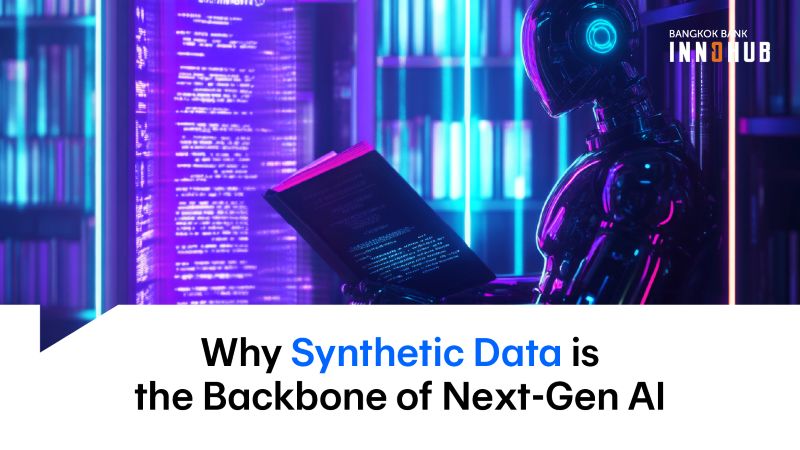Imagine this: Your AI team is building a robot for families to keep at home. They’ve trained it to wash dishes, walk the dog, tell bedtime stories to the kids, and do a thousand other useful tasks around the house.
But what should it do if the house catches fire? If the dog suddenly gets aggressive and bites one of the children? If a burglar breaks into your home? These extreme cases won’t happen often, but the AI needs to act quickly and correctly whenever they occur.
Real-world AI, such as a robot, is typically trained through direct experience. Programmers and engineers set up a real situation in a lab teach the robot to recognize that situation through pattern recognition, and then model the best course of action so that the robot knows what to do the next time something similar happens.
The problem is that scenarios like the ones mentioned above can be expensive or dangerous to simulate, even in a controlled environment. And the passive approach — waiting for a real-life disaster to occur, just to collect the necessary data from it — is far from ideal.
Synthetic data provides a solution: Data which is hard to get in the real world can be artificially constructed in virtual space. Your robot won’t know the difference anyway, as it’s all ones and zeroes from the AI’s point of view. This shortcut allows your software to train on all kinds of rare and dangerous cases before being released to consumers. Yet synthetic data can also bring its own problems.
Where virtual meets reality
Synthetic data has become an important crutch for advancing next-generation AI, particularly where real-world data is scarce, sensitive, or insufficient. Projections suggest a potential shortage of quality, real-world data for training large language models and neural networks by 2040, with a 20% chance that model development could stall due to this scarcity.
Additionally, real user data raises significant privacy and compliance concerns, with 46% of data breaches involving customer personally identifiable information. Synthetic data offers a compelling alternative by providing a privacy-safe, scalable solution to these challenges, particularly within highly regulated industries.
Its value is enormous. In finance, synthetic data powers fraud detection and risk assessment models without exposing sensitive customer information. In healthcare, it can simulate rare medical cases and drug interactions, bypassing the need for private patient records. In the automotive sector, it trains self-driving systems and tests safety features by recreating unusual road conditions for the algorithm to navigate. Wherever real data is either too risky or too limited for easy collection, synthetic data can fill the gap.
The danger is that synthetic data may actually be too convenient. As any engineer will tell you, each new plan or design needs to be tested against reality to ensure that the theory behind it is sound. Software engineering is no different; training or testing an algorithm on virtual data is a start, but reality is the gold standard. No design is certain until it performs as expected in the real world.
Moreover, consider the potential for abuse. Imagine a pharmaceutical company wanting to create hype and early sales for a new drug, and uses synthetic data that it generates in-house in order to ‘prove’ the efficacy of that drug. The incentives here are concerning, but the story can get even worse from here. Further imagine that, in the wake of such a scandal, a more principled drug company uses synthetic data under the strictest of controls to find a formula that will cure a rare disease. Their earnest efforts may well be met with anger and cynicism by a public that refuses to trust the resultsof synthetic data.
LLMs like ChatGPT can also increase their capabilities by training on synthetic content, but it may be unsettling to consider an algorithm that consumes artificial text in order to create more artificial text. As and when this new text is published online, it will inevitably be scanned by the next generation of LLMs. Over time, such activity would create the conditions for a ‘zombie internet’, with authentic content drowned out by copies that have no human origin — all produced by AI, and mindlessly disconnected from real-world experience.
Threading the needle
The promise of artificially generated information is that it replicates the patterns and structures of genuine datasets, opening new doors for forward-looking industries in which real data is scarce or sensitive. Synthetic data delivers massively on these expectations, but it also comes with real cautions and limitations.
If the underlying data generation model is flawed or biased, those issues will persist in the synthetic dataset, potentially skewing results. There’s also the risk of model collapse, where over-reliance on AI-generated data degrades performance over time.
To mitigate these risks, synthetic data should be used no more than is necessary. It should also undergo rigorous cross-testing to ensure accuracy, fairness, and functional utility. Where trust is likely to become an issue, organizations must be thoroughly transparent about the data they use and how they safeguard against bias.
All tools have rules for proper use, and synthetic data is no exception. When properly validated and combined with real-world inputs, synthetic data enables scalable, privacy-safe AI development without compromising accuracy.




